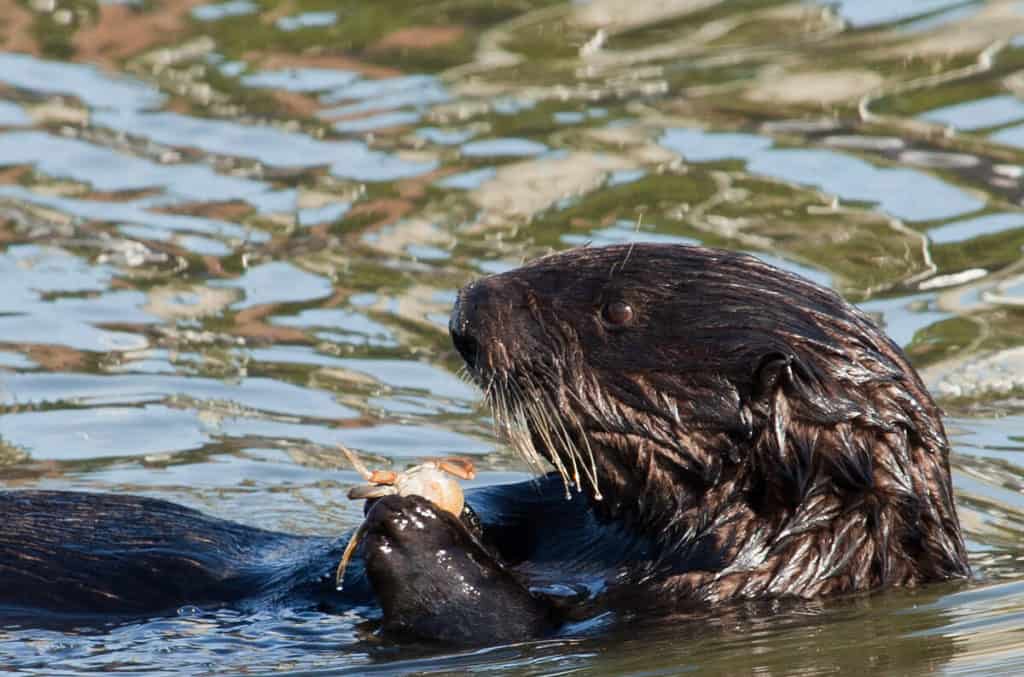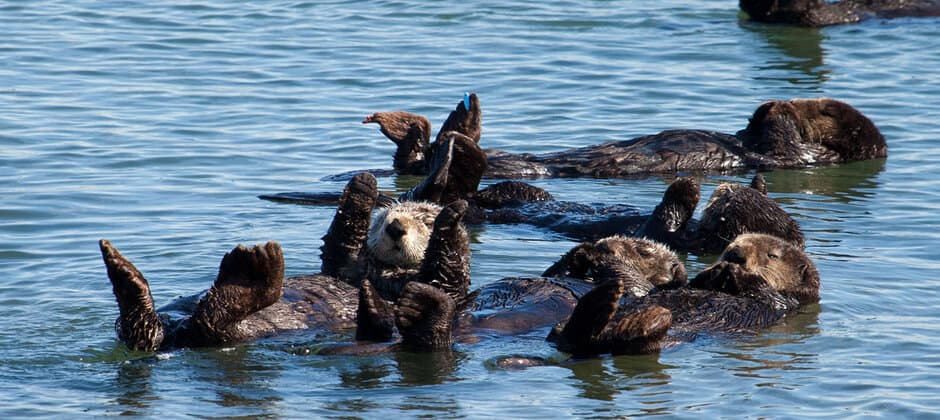Share this article
JWM: Researchers find unexpected sea otter hotspots
As central California sea otters recover from past centuries of overharvesting, they’re gradually expanding into areas they historically occupied. By understanding which types of habitats support higher sea otter abundance, researchers hoped, they could help managers conserve recovering populations while anticipating and mitigating potential resource conflicts.
What they found caused them to rethink which areas were most important for the mammals, and it led them to conclude that the region could support more sea otters than biologists believed.
Sea otters (Enhydra lutris) are often associated with California’s rocky outer coast, and not surprisingly, researchers found they often occurred at high densities in areas with rocky reefs, which support many of the prey species they prefer and the kelp forests that provide cover.
But one thing did surprise the researchers. Estuaries also proved to be sea otter hotspots.
“This wasn’t really realized until recently,” said Tim Tinker, a research ecologist and adjunct professor at the University of California Santa Cruz and lead author of a study in the Journal of Wildlife Management. “Our analyses suggest that estuaries could offer one of the higher potentials for sea otter recovery on the West Coast of North America,” he said.
Sea otters have been recovering on the West Coast for the last 100 years after overharvesting in the 18th and 19th centuries depleted their numbers across a range that once extended from Alaska to Baja California. In central California, a small remnant colony lingered and gradually spread, although it still occupies less than a third of their historical range in the area.
For conservationists, this expansion is good news, but it can bring problems, such as conflicts with the shell fishing industry as growing numbers of sea otter consume urchins, crabs and clams. By anticipating where future sea otter populations will be, Tinker said, “as they recover by normal, natural recolonization, we can help managers proactively deal with future resource conflicts they may anticipate.”

A sea otter consumes a crab. Credit: Joe Tomoleoni
A research scientist with the U.S. Geological Survey Western Ecological Research Center at the time, Tinker led a team that set out to determine which habitat features were associated with more sea otters. They also wanted to find out what population numbers would put the sea otters at carrying capacity in central California, to help inform recovery targets.
Tinker’s team tapped into a dataset of sea otter abundance reaching back to the 1980s, the product of a collaborative effort by the USGS, California Department of Fish and Wildlife, U.S. Fish and Wildlife Service and other agencies. “Every year, we survey the population making an exhaustive count of the abundance and distribution of the entire population,” he said. “Because sea otters spend their lives so close to shore and rest at the surface, it is easy to count them from shore with high-powered telescopes. For this reason, and because individual sea otters have very high site fidelity and use just a small area of coast, we can get a more precise picture of their habitat associations than with most other marine mammals.”
The team recorded their current estimates using GIS and GPS technology and digitized the older data from paper maps. They used remote sensing and sonar to gather information about the ocean and the sea floor, and they noted other features, like chlorophyll levels and the amount of kelp canopy present.
They modeled this information to determine which combinations of habitat features were associated with higher densities of sea otters at equilibrium — the features most likely to lead to greater recovery potential. They weren’t surprised to see the mammals’ association with rocky reefs and kelp. But the potential for abundant sea otter populations in estuaries was new. Biologists have long thought of sea otters as apex predators in outer coast habitats. While that was where they first recovered after the fur trade, Tinker said, it’s only a portion of the range they once occupied.
“Recovery into these estuaries is seeing them go back into historical habitat, and really redefining how we think of them” he said.
Using the information on habitat features, the team determined the region had a potential carrying capacity of 17,266 sea otters, higher than previous estimates. They also estimated a potential optimum sustainable population value — a management target required under the Marine Mammal Protection Act — of 10,236 sea otters.
Sea otters are a keystone species, Tinker said, which means they have unusually large effects on their ecosystem. While their shellfish consumption can create conflicts with certain fisheries, he said, their presence may improve the health and abundance of kelp forests and eelgrass beds — features that could lead to greater numbers of rockfish and other fish that could benefit the industry.
He hopes the research can help inform future management and conservation of this threatened sub-species. In northern California and Oregon, where sea otter recovery has been hampered by mortality from sharks and a lack of kelp forests, managed re-introductions are being considered to accelerate their recovery. Understanding habitat associations could be important for reintroduction efforts, he said.
“I think this is an important new tool that can be used to help with the recovery of sea otters and their ecosystems,” he said.
This article features research that was published in a TWS peer-reviewed journal. Individual online access to all TWS journal articles is a benefit of membership. Join TWS now to read the latest in wildlife research.
Header Image: For sea otters in central California, estuaries turned out to be hotpsots. Credit: Joe Tomoleoni








